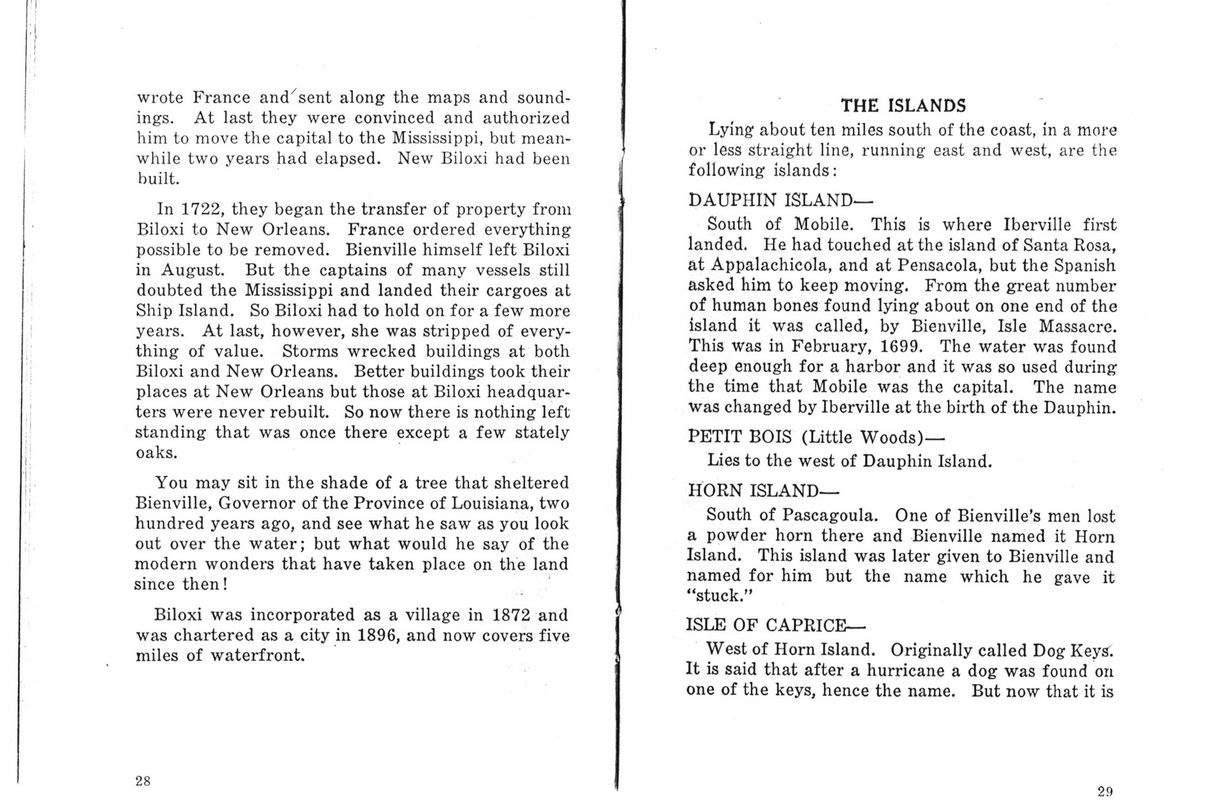This text was obtained via automated optical character recognition.
It has not been edited and may therefore contain several errors.
wrote France andxsent along the maps and soundings. At last they were convinced and authorized him to move the capital to the Mississippi, but meanwhile two years had elapsed. New Biloxi had been built. In 1722, they began the transfer of property from Biloxi to New Orleans. France ordered everything possible to be removed. Bienville himself left Biloxi in August. But the captains of many vessels still doubted the Mississippi and landed their cargoes at Ship Island. So Biloxi had to hold on for a few more years. At last, however, she was stripped of everything of value. Storms wrecked buildings at both Biloxi and New Orleans. Better buildings took their places at New Orleans but those at Biloxi headquarters were never rebuilt. So now there is nothing left standing that was once there except a few stately oaks. You may sit in the shade of a tree that sheltered Bienville, Governor of the Province of Louisiana, two hundred years ago, and see what he saw as you look out over the water; but what would he say of the modern wonders that have taken place on the land since then! Biloxi was incorporated as a village in 1872 and was chartered as a city in 1896, and now covers five miles of waterfront. 28 THE ISLANDS Lying about ten miles south of the coast, in a more or less straight line, running east and west, are the following islands: DAUPHIN ISLAND— South of Mobile. This is where Iberville first landed. He had touched at the island of Santa Rosa, at Appalachicola, and at Pensacola, but the Spanish asked him to keep moving. From the great number of human bones found lying about on one end of the island it was called, by Bienville, Isle Massacre. This was in February, 1699. The water was found deep enough for a harbor and it was so used during the time that Mobile was the capital. The name was changed by Iberville at the birth of the Dauphin. PETIT BOIS (Little Woods)— Lies to the west of Dauphin Island. HORN ISLAND— South of Pascagoula. One of Bienville’s men lost a powder horn there and Bienville named it Horn Island. This island was later given to Bienville and named for him but the name which he gave it “stuck.” ISLE OF CAPRICE— West of Horn Island. Originally called Dog Keys. It is said that after a hurricane a dog was found on one of the keys, hence the name. But now that it is 29

Biloxi Historical-Sketch---Bremer-(16)